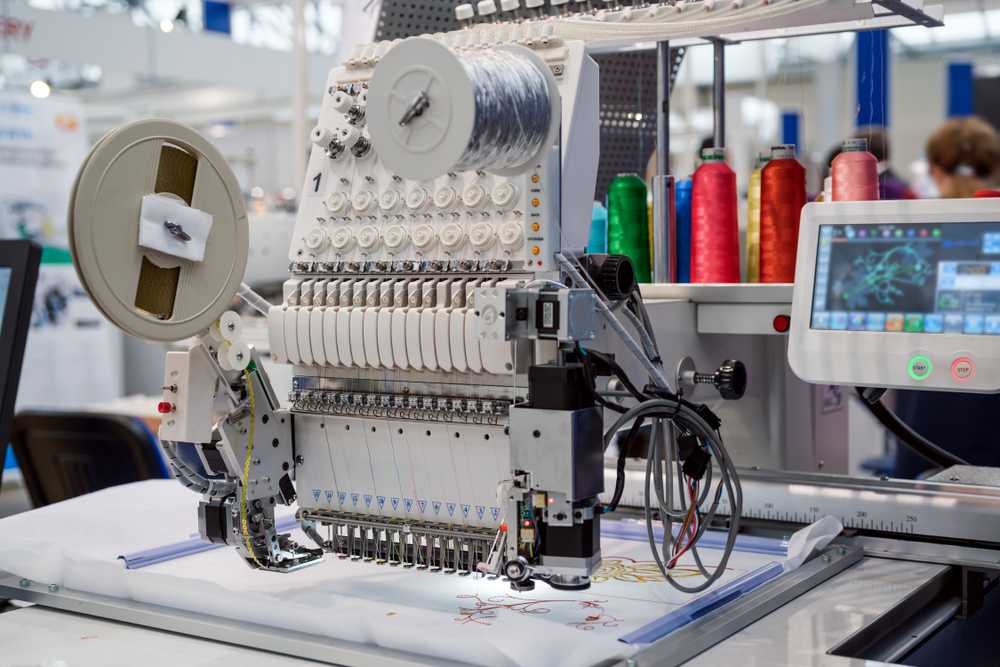Reliable Digitizing for Embroidery: Quick Turnaround
Reliable Digitizing for Embroidery: Quick Turnaround
Blog Article
Streamlining the Art of Needlework Digitizing: Step-by-Step Overview
Needlework digitizing is a careful craft that requires precision and creativity. As technology proceeds to advance, the digitization process has actually come to be a lot more obtainable, permitting enthusiasts to bring their detailed designs to life easily. In this overview, we will certainly unwind the intricacies of needlework digitizing, damaging down each action systematically to streamline the procedure and empower both novices and seasoned embroiderers alike. Remain tuned to uncover just how you can streamline this complex art form and change your creative visions into perfectly embroidered masterpieces.
Comprehending Embroidery Digitizing Software Application
Needlework digitizing software acts as a vital device for transforming complex layouts into electronic formats compatible with needlework makers, promoting exact stitching and modification. This customized software program allows individuals to import different image file formats, such as JPG or PNG, and convert them right into embroidery machine-readable styles like DST, EXP, or PES - Digitizing for Embroidery. By utilizing features like stitch editing, underlay options, and thread shade option, digitizing software program allows customers to control every element of the design procedure
Additionally, progressed embroidery digitizing software program uses tools for producing complicated styles, changing stitch thickness, and including intricate information. Customers can also preview the style before sewing it out, ensuring accuracy and decreasing mistakes. Furthermore, many software application give automated attributes that aid streamline the digitizing process, saving time and effort.
Comprehending the abilities of embroidery digitizing software program is essential for achieving high-quality results in needlework jobs. By grasping this device, needlework fanatics and experts can unleash their creative thinking and bring detailed designs to life with accuracy and performance.

Picking the Right Style Documents
After familiarizing on your own with the capabilities of embroidery digitizing software, the next essential action in the procedure is choosing the appropriate style data for your task. Digitizing for Embroidery. When selecting a layout declare needlework digitizing, it's important to consider the intricacy of the layout, the dimension of the last product, and the sort of fabric you will certainly be collaborating with
For elaborate designs with fine details, a high-resolution photo or vector documents is advised to ensure that the embroidery machine can precisely recreate the design. In addition, the size of the last item plays a substantial function in selecting the right design file. Bigger designs might need greater resolution data to keep quality and sharpness.
Furthermore, the sort of fabric you will certainly be embroidering on influences the choice of design data. Various textiles might require modifications in the style documents to make sure that the stitches are effectively straightened and the design looks like meant. By meticulously choosing the ideal design file based upon these factors, you can set yourself up for an effective embroidery digitizing procedure.
Digitizing Tools and Techniques
Using specialized software application and accuracy methods, digitizing devices are necessary in changing elaborate layouts right into embroidery-ready files. Needlework digitizing software, such as Wilcom, Hatch, or Embrilliance, supplies the necessary system to transform art work right into stitch information. These programs supply features like stitch modifying, padding options, and lettering tools to ensure the layout translates seamlessly onto fabric.
Among the key methods in digitizing is creating a clear path for the needlework machine to comply with. This entails digitizing each component of website here the design with precision, determining stitch types, thickness, and instructions. By utilizing devices like digitizing tablets or software-specific plugins, embroiderers can attain a high degree of accuracy in their digitized layouts.
Furthermore, understanding the art of padding sewing is important for generating high quality embroidery. Underlay sewing supports the material and produces a foundation for the layout, ensuring that the final item is both aesthetically enticing and durable. By understanding these digitizing tools and techniques, embroiderers can raise their craft and bring complex designs to life with accuracy and efficiency.
Personalizing Stitch Types and Directions
The option of stitch kinds can substantially affect the overall appearance and appearance of the stitched layout. helpful site By tactically incorporating these stitch types, embroiderers can achieve depth and dimension in their designs.
Moreover, the direction of stitches plays an important function in enhancing the visual allure of the last needlework. By experimenting with various stitch angles and patterns, embroiderers can bring their layouts to life with exceptional detail and intricacy.
Testing and Refining Your Digitized Layout
To ensure the precision and quality of your digitized style, comprehensive testing and improvement are vital actions in the needlework digitizing procedure. Once you have finished the digitization of your layout, it is essential to examine it before waging the actual embroidery. Evaluating enables you to recognize any type of potential issues such as string breaks, stitch density problems, or layout distortions that may impact the final result.

After testing, it is essential to fine-tune your digitized layout based upon the comments from the examination sew-out. link This might entail tweaking sew setups, adjusting densities, or making adjustments to the overall style to attain the desired result. By repeating via testing and improvement, you can adjust your digitized layout to excellence before moving on with the actual needlework procedure.
Conclusion
Finally, understanding the art of embroidery digitizing needs a complete understanding of the software application, choosing the right design file, using digitizing devices and strategies, personalizing stitch types and directions, and testing and refining the digitized style. By adhering to these steps, embroiderers can streamline the digitizing procedure and produce premium stitched designs with precision and performance.
Report this page